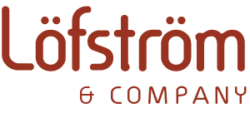Many organizations state they need to perform a tactic in order to take a step forward in their marketing. In reality, most need a plan, a strategic marketing plan. However, they don’t often warm up to the concept of investing many hours in developing a strategic plan.
Maybe they would be more inclined to plan if they could do so in a concise fashion and end up with a sensible and actionable marketing plan. The plan below may be just the ticket, and is adapted from the guerrilla marketing plan by Jay Conrad Levinson.
The Simplified Marketing Plan Concept
There are multiple approaches for creating a marketing plan, and there is something to be said for keeping it simple, but actionable. A more formal plan might be 20, 30 or even 100 pages long, and full of comprehensive, detailed research, a SWOT and competitive analysis. This simplified plan is relatively brief (3-5 pages), but focuses on key marketing plan elements. It is intended to help an organization move from planning to acting in a relatively short time. Each of the seven steps should be given thoughtful deliberation.
1. Explain the purpose or objectives of your marketing plan.
E.g., specific increase in revenue over xx months, a stated number of new customers in specific niche, increases in measurable awareness of a service/product, etc. Often a firm financial objective is accompanied by a marketing objective without a specific financial measurement.
2. Describe how you achieve your objectives by describing the benefits you provide to clients
“We help people achieve the best-looking lawn on the block by producing effective fertilizer products.”
“We make customers and their families feel safer while driving (due to our great attention to safety engineering).”
3. Specify your target market
A target market is a group of people or organizations that will need or want your products and services.
E.g., Our target market includes corporate property management, commercial and industrial, hotels, private estates, and apartment blocks. (window cleaner)
E.g., Our target market are technology-loving people that don’t have time to watch TV, with a large disposable income…
4. Describe your niche in that market
Explain how your produce/service product or service is just right for a select demographic or target market. What can you provide that’s new and compelling?
5. Determine the marketing tools you will use
The combination of online and offline marketing tools used to send and receive messages.
6. Focus on the identity of your business
Identity is the ongoing, consistent image and brand that you want to convey. Often communicated in mission and/or vision statements, through logos and graphics and in how a company positions itself in the marketplace.
“Our service professionals are creative, collaborative, highly competent, results-oriented and easy to work with.”
7. Establish a marketing budget
A fixed amount, percentage of revenue, actual estimates of desired marketing initiatives, etc. The marketing expenditures should be linked directly to a series of steps, as stated in an action plan.
